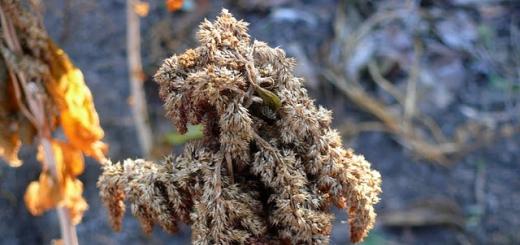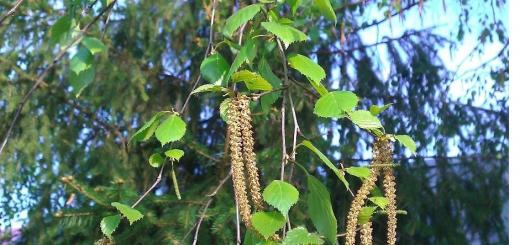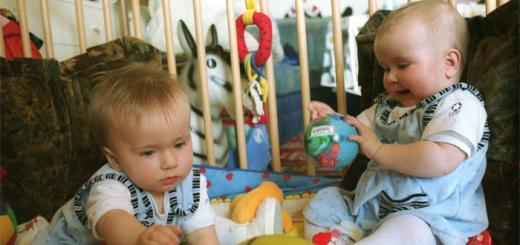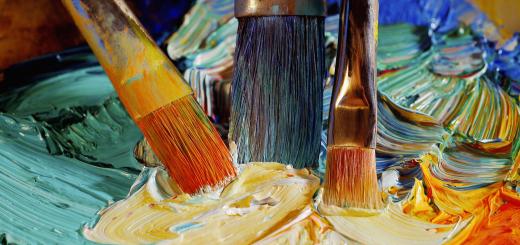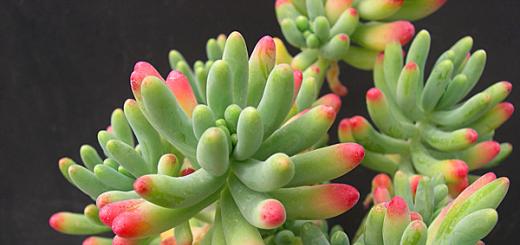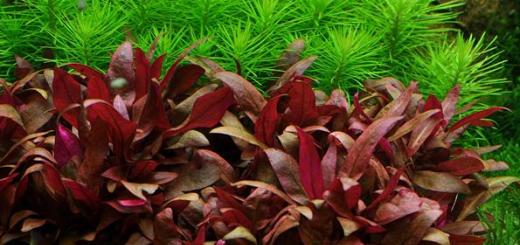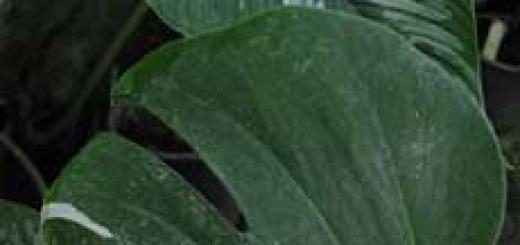The efficiency of heating stoves and other similar devices largely depends on the design chimney in the house.
Stove chimney pipe designed to remove volatile and gaseous combustion products from the firebox and create draft to ensure the combustion process.
Until relatively recently, all chimney pipes were made either from brick, or from asbestos-cement pipes, or from black non-galvanized metal.
The thing is that when the temperature of the exhaust gases exceeded 100 degrees C, zinc began to evaporate into the room, and its fumes are harmful to health. That’s why they used non-galvanized metal, covering it on the outside with beautiful silver.
Today, chimneys are built from a variety of materials, and each of them has its own pros and cons. So let's try to figure out which pipe to choose for the chimney of your house so that it serves faithfully for decades.
Asbestos cement chimney pipe Asbestos-cement pipes have been widely used since the middle of the last century. They were cheap, easy to produce, and there was plenty of natural asbestos in the country. Moreover, such pipes could be used without any preliminary insulation for a wide variety of agricultural needs. But they were never intended for arranging chimneys.
Asbestos-cement pipes have been widely used since the middle of the last century. They were cheap, easy to produce, and there was plenty of natural asbestos in the country. Moreover, such pipes could be used without any preliminary insulation for a wide variety of agricultural needs. But they were never intended for arranging chimneys.
During the times of reclamation in rural areas, asbestos-cement pipes were not uncommon, and during the period of mass construction of private houses, they came into use as chimney pipes.  Many opponents of this implementation immediately appeared - first of all, environmentalists who argued that asbestos cement releases many bad compounds into the environment.
Many opponents of this implementation immediately appeared - first of all, environmentalists who argued that asbestos cement releases many bad compounds into the environment.
Although, according to scientists, asphalt on the road is even more carcinogenic.
But, nevertheless, even the roofs of buildings today are covered with a variety of expensive roofings instead of cheap and durable asbestos.
All these fears and myths have little to do with chimneys made from asbestos-cement pipes.
And at the same time, they are not at all safe - this material was never designed for high temperatures, and can burst already at 300 degrees C. Therefore, if you place them, then not at the stove itself - but as close to the roof as possible, where The smoke is already a little cooled.
To prevent the danger of flying fragments and accidental fire (God forbid) in the hot part of the pipe, as well as in uncontrolled places (attic), it is better to wrap the asbestos-cement pipe with a sheet iron bandage.  There is also another point. Soot forms in any chimney, but the smoother its walls, the less soot is retained on them.
There is also another point. Soot forms in any chimney, but the smoother its walls, the less soot is retained on them.
But asbestos-cement pipes have never been smooth, and a lot of soot accumulates on them. And it’s easy for it to catch fire – any stove maker knows this.
Moreover, if the soot catches fire inside an asbestos-cement pipe, it can burst due to temperature. Is it dangerous.
Asbestos-cement pipes are also severely damaged by condensation. Condensate is an aggressive medium consisting of a mixture of combustion oxides and a very small amount of moisture.
Moreover, the oxides contain a good percentage of hydrochloric acid, which even destroys bricks, but asbestos also absorbs it, transferring all this to the building in the form of unsightly stains with the same unpleasant odor.
This means that if you decide to use an asbestos-cement pipe for your chimney, clean it as often as possible.
True, cleaning such pipes is difficult - inspection windows cannot be made in such pipes.
Brick pipe The construction of a brick chimney has a long history.
The construction of a brick chimney has a long history.
Such a pipe is laid out of red stove brick at the same time as the stove. A competent stove maker knows exactly which brick to choose for the stove, even different ones inside and outside, which brick is needed for the chimney inside the attic, and which one is needed for the outside of the chimney on the street.  The inside of the chimney should not be corroded by condensation, and the outside should not be washed away by rain or crack due to temperature changes. Therefore, overheated, underheated and wet bricks should be clearly distinguished.
The inside of the chimney should not be corroded by condensation, and the outside should not be washed away by rain or crack due to temperature changes. Therefore, overheated, underheated and wet bricks should be clearly distinguished.
A pipe made of this material requires periodic repair. In addition, to install a brick pipe with your own hands, you need to use a special solution that is resistant to the combustion process, but at the same time is plastic and heat-resistant.  Since the weight of a brick pipe is very significant, the entire stove-pipe structure is usually one piece and placed on a separate foundation not connected to the house.
Since the weight of a brick pipe is very significant, the entire stove-pipe structure is usually one piece and placed on a separate foundation not connected to the house.
Brick chimneys and chimneys are also installed inside the brickwork of the building wall.  Place chimneys and chimneys with bandages on lime or cement-lime mortar inside the house, and above the roof on cement mortar.
Place chimneys and chimneys with bandages on lime or cement-lime mortar inside the house, and above the roof on cement mortar.
According to SNiP, wall channels are made of high quality red solid brick, with a seam no thicker than 10 mm. The inner surface of the channel is not plastered.
However, no matter how well such brickwork is made, the inner surface of a brick chimney is rough and it will still become covered with soot over time. In any uneven area of the chimney, soot accumulates more intensely.
The wall with the chimney duct inside is almost constantly wet from condensation.  Aggressive acidic condensate destroys the brickwork, the brick crumbles and sometimes even collapses inside the channel and narrows its cross-section.
Aggressive acidic condensate destroys the brickwork, the brick crumbles and sometimes even collapses inside the channel and narrows its cross-section.
To significantly increase the service life of the chimney, it is necessary to periodically clean it at least once every six months.
The internal cross-section of a brick chimney has a rectangular cross-section, so when gases move in the corners, turbulence occurs, which reduces draft.
Therefore, an asbestos-cement or steel pipe is sometimes placed in the internal channel.
The main disadvantages of a brick pipe are weight, size, difficulty of repair and replacement.
But the aesthetics, fire safety and durability of brick chimneys exceed any of their shortcomings.
Ceramic stove pipe Ceramic chimneys are also a modular system of fully prefabricated elements.
Ceramic chimneys are also a modular system of fully prefabricated elements.
In the simplest cases, they are a regular ceramic pipe, but it is considered more appropriate to use sandwich structures that provide safe operating conditions.
Heat-resistant ceramics are acid-resistant and durable.  Some manufacturers claim a guaranteed service life of up to 30 years, and an expected service life of up to 100 years.
Some manufacturers claim a guaranteed service life of up to 30 years, and an expected service life of up to 100 years.
The inner surface of the ceramic is coated with a special heat-resistant glaze, which makes it absolutely smooth.
This prevents the formation of turbulent vortices, the gas flow passes in a calm laminar flow. Soot does not stick to the smooth ceramic surface.  The chimney of such pipes is the most durable. It is not afraid of prolonged intense heating, chemical aggressive environments, or corrosion. Its inner surface is very smooth, almost no soot or ash lingers in it, and as a result, maintenance of the pipes is minimal.
The chimney of such pipes is the most durable. It is not afraid of prolonged intense heating, chemical aggressive environments, or corrosion. Its inner surface is very smooth, almost no soot or ash lingers in it, and as a result, maintenance of the pipes is minimal.  Ceramics is also an excellent heat-absorbing material, and in combination with the expanded clay concrete box in which it is hidden, the outer surface of the chimney ultimately does not heat up at all. And this is a complete guarantee that your house will never fall into that sad statistics of houses that burn due to chimneys!
Ceramics is also an excellent heat-absorbing material, and in combination with the expanded clay concrete box in which it is hidden, the outer surface of the chimney ultimately does not heat up at all. And this is a complete guarantee that your house will never fall into that sad statistics of houses that burn due to chimneys!
These elements have a significant total weight, so the ceramic chimney pipe is installed on a separate foundation.
Carrying out brickwork requires considerable time, and installation of a chimney with a ceramic pipe can be carried out in a short time.
Ceramic pipes are expensive and practical.
Metal chimney Metal chimneys are almost always made of stainless steel. They are an almost modular system of straight sections and shaped elements: adapters, bends, tees, umbrellas.
Metal chimneys are almost always made of stainless steel. They are an almost modular system of straight sections and shaped elements: adapters, bends, tees, umbrellas.
Such systems can be either embedded inside brick channels or mounted separately.
The stainless steel used is heat-resistant and acid-resistant, and condensation cannot corrode it.  Stainless steel is the most suitable material in terms of overheating, soot and getting wet. This material can even heat up to 500 degrees C – and it will not melt yet.
Stainless steel is the most suitable material in terms of overheating, soot and getting wet. This material can even heat up to 500 degrees C – and it will not melt yet.
Soot does not accumulate on the smooth inner surface of the chimney.
Thus, due to the smooth, soot-free surface and stable cross-section, stable aerodynamic characteristics of the passage of exhaust gases are ensured.  Single-walled metal chimneys consist of one layer of stainless steel, while double-walled ones consist of two layers of metal with mineral (most often basalt) wool placed between them.
Single-walled metal chimneys consist of one layer of stainless steel, while double-walled ones consist of two layers of metal with mineral (most often basalt) wool placed between them.
These are sandwich systems. In this case, the outer surface heats up minimally, heat is retained perfectly throughout the entire chimney, and therefore condensation almost does not form on the inner surface.  Sandwich pipes are very technologically advanced and have been used quite often lately, especially for baths. The only thing is that when purchasing, you need to carefully check the quality of the steel, because there are many cases of pipes burning through and fires for this reason.
Sandwich pipes are very technologically advanced and have been used quite often lately, especially for baths. The only thing is that when purchasing, you need to carefully check the quality of the steel, because there are many cases of pipes burning through and fires for this reason.
Sometimes, during repair or restoration work, a metal pipe is placed inside brick channels. This is called a "sleeve".
The low weight allows these chimneys to be installed without a special foundation.  There are also corrugated pipes. They are used exclusively to create turns and bends in the chimney, but almost never as the main pipe. But they are irreplaceable if there is a beam just above the stove and all that remains is to go around it. For more, they do not yet have sufficient anti-corrosion or thermal insulation qualities.
There are also corrugated pipes. They are used exclusively to create turns and bends in the chimney, but almost never as the main pipe. But they are irreplaceable if there is a beam just above the stove and all that remains is to go around it. For more, they do not yet have sufficient anti-corrosion or thermal insulation qualities.
It should be noted that there are metal chimneys that are not made of stainless steel. For example, for sauna stoves, some manufacturers offer thick-walled pipes made of low-alloy steel.
And when constructing sauna stoves, craftsmen quite often use cast iron chimneys from sewer pipes.
Concrete chimney pipes The main advantage of such pipes is the low cost of the material, durability, maintainability and lack of seams. And you can make the pipes themselves at home using sliding formwork.
The main advantage of such pipes is the low cost of the material, durability, maintainability and lack of seams. And you can make the pipes themselves at home using sliding formwork.
The composition of the mixture is as follows: three parts sand, water and one part Portland cement M400. The concrete turns out to be quite hard. It is better to make the pipes monolithic, and there will be very little soot.
The only drawback of such pipes is their heaviness. This can be corrected if expanded clay is used in the composition.
Vermiculite pipes
Vermiculite pipes are a new wave of popularity in the construction market. Condensation does not form inside such pipes at all, and therefore they very rarely need to be cleaned.
In its composition, vermiculite is close to aerated concrete, and is just as light, but it does not absorb moisture at all, tolerates high temperatures well and has good resistance to any physical influences.
 Chimney pipe head
Chimney pipe head
Many people saw something like an umbrella, a mushroom or a hat at the end of the pipe. This part of the chimney is called the head; more modern terminology refers to this structure as a spark arrester or deflector.
The head of the chimney can perform one or more functions - it protects from precipitation, extinguishes sparks flying from the chimney, improves the draft of the stove, and sometimes it is a very beautiful decoration.
The head of the chimney can be structurally simple - in the form of an umbrella, or it can have a complex design to protect against wind blowing and improve overall draft; the appearance in this case can have a different shape.
Chimney draft There are special devices that measure chimney draft in pascals (the difference in pressure in sections of the chimney), although they are very expensive, so in most cases, rather trivial methods are used to determine draft:
There are special devices that measure chimney draft in pascals (the difference in pressure in sections of the chimney), although they are very expensive, so in most cases, rather trivial methods are used to determine draft:
- the traction force is determined by the deflection of a sheet of paper (in most cases, toilet paper is ideal);
- the direction of draft is determined by the direction of the smoke from a lit cigarette.
The sufficiency of traction can also be determined visually:
- Smoke in the room - reverse draft;
- The flame is bright white, there may be a roar in the chimney - the draft is too strong;
- Flame with dark stripes, red – insufficient draft;
- The flame is golden yellow – the draft is normal.  What does chimney draft depend on:
What does chimney draft depend on:
- insufficient height will lead to a decrease in traction, and in the case of excess, then, on the contrary, to an excessive increase. If you are not going to carry out an accurate physical and mathematical calculation, you should focus on a length of at least 4.5 meters.
- The cross-sectional shape directly affects the aerodynamic characteristics of the chimney: for example, in the case of a rectangular or square cross-section, we get additional turbulence in the corners that impede the overall flow, which is not observed in round analogues.
- Placing the chimney mainly in the interior of the building will allow you not only to increase the heating capacity of the entire heating system, but will also make it possible to maintain constant good draft (even in frosty times).  At the same time, placing the chimney outside the building requires it to warm up for a longer time and, as a result, will cause a decrease in draft.
At the same time, placing the chimney outside the building requires it to warm up for a longer time and, as a result, will cause a decrease in draft.
- Too small cross-sectional area sizes when releasing a large volume of combustion products will not create the required thrust. This rule is exactly the opposite: too large a cross-sectional area with small volumes of combustion products will lead to the fact that all the heat will “fly out into the chimney”. Installing chimney pipes of different diameters in different sections of the chimney will not only lead to unpredictable draft behavior, but will also allow the formation of soot and other deposits.  - It is best to place the chimney pipe close to the ridge of the roof, but here certain conditions must be observed: if the pipe is located at a distance of 1.5 meters from the ridge, then the head should rise at least half a meter. If the distance between the ridge and the cap is in the range from 1.5 to 3 meters, then we place the chimney flush with the ridge. When the distance exceeds 3 meters, in this case the head should be located on a line drawn at an angle of 10 degrees from the ridge of the roof downwards. Incorrect location of the chimney in relation to the ridge of the roof can lead to weakening of draft in a certain wind direction.
- It is best to place the chimney pipe close to the ridge of the roof, but here certain conditions must be observed: if the pipe is located at a distance of 1.5 meters from the ridge, then the head should rise at least half a meter. If the distance between the ridge and the cap is in the range from 1.5 to 3 meters, then we place the chimney flush with the ridge. When the distance exceeds 3 meters, in this case the head should be located on a line drawn at an angle of 10 degrees from the ridge of the roof downwards. Incorrect location of the chimney in relation to the ridge of the roof can lead to weakening of draft in a certain wind direction.  - The chimney draft also depends on the smoothness of the chimney walls and the presence of sharp turns.
- The chimney draft also depends on the smoothness of the chimney walls and the presence of sharp turns.
- The shape and dimensions of the pipe head also affect the draft. When assembling and choosing an umbrella, there is a significant danger of “miscalculating” the dimensions and, as a result, getting backdraft, for example, if the umbrella is too large and lowered too low. If you install a factory stainless steel chimney hood, no problems will arise - all the necessary parameters have already been calculated by engineers
- Atmospheric phenomena, air pressure, temperature, humidity, the presence of wind - all this naturally affects the draft in the chimney.
We can adjust the draft manually using a gate.
A damper is a damper, the intended use of which is intended not only to regulate the draft force, but also to protect the room from fire. One damper is installed in the chimney duct, the other, as a rule, is mounted either in the stove itself or in its door. Thus, by varying their position, we can adjust the traction force, which is an important advantage.
A good stove and chimney are the key to warmth and comfort in the house, because with its help you can easily heat even a very large house.
However, not everyone can correctly assemble a stove and pipe with their own hands, which is why in order to do such work, you must have certain knowledge and experience. Laying a chimney with your own hands is not at all difficult, you just need to have all the necessary materials and follow the instructions.
We cannot imagine a home without heating. Our concept of comfort unconditionally includes a suitable temperature regime. There is no central heating in a private house, and every owner has a heating problem.
We welcome our regular reader and bring to his attention an article about chimneys for stoves - an absolutely necessary component of any heating system, be it a stove, a modern fireplace or a boiler with automatic fuel supply.
A chimney is a vertically located pipe that discharges hot flue gases of fuel in a heating unit into the atmosphere to a height sufficient to create draft in the duct and disperse toxic combustion products away from windows and ventilation ducts.
Principle of operation
The principle of operation of chimneys is based on the phenomenon of expansion of hot gases, reducing their density and, accordingly, the rise of lighter gases upward.
Flue gases rise upward, a vacuum is formed in the firebox and colder air is sucked in - a draft phenomenon occurs.
How the chimney works
The main part of any chimney is a vertical pipe structure. Structurally different from modern prefabricated counterparts made from ready-made factory-made modules.
A traditional brick pipe includes the following elements: a neck for connecting to the furnace, a riser with valves, a slope, an otter, a neck (at the point of passage through the roof), a headband, and sometimes a metal cap.
Homemade chimneys made of metal or asbestos cement include pipes, caps, adapters for connecting to the stove, and insulation.
The most modern types of chimneys are ceramic and made of. The ceramic structure consists of an external expanded clay concrete frame, an internal prefabricated ceramic pipe, and a layer of insulation between them. The ceramic and sandwich structure itself includes the following blocks: straight blocks for collecting condensate, tees, modules for cleaning, transition elements for connecting heating units. An integral part of a modern chimney is the deflector.
Types and designs
The design features of the chimney primarily depend on the material from which they are made.
According to the material, chimneys are:
- brick;
- reinforced concrete (usually industrial);
- asbestos-cement;
- of steel;
- ceramic;
- three-layer metal - two layers of steel with mineral wool insulation between them.

By design, chimneys are:
- indigenous - the structure has its own foundation;
- wall, built into the load-bearing walls of the building;
- mounted - light pipes are mounted on a vertically located outlet pipe of a boiler or fireplace (and potbelly stove);
- Often lightweight structures are simply suspended from the supporting structures of the building;
- coaxial - arranged on the “pipe-in-pipe” principle. The most common example is horizontal gas vents of gas heating boilers. It is used in devices with a closed combustion chamber and ensures maximum safety for residents. Save fuel consumption. Recently, vertical structures of the Shidel system have appeared, taking combustion air from the roof of the house (just below the top).
Which one is better to choose?
The choice of chimney largely depends on the parameters of the installed heating unit (design, temperature, type of fuel used), the degree of readiness of the house (we are modernizing an old house with a stove and a wall pipe, the house is only “in design”, or the load-bearing structures have already been installed, or there is already finishing) ; heated volumes.
Features of various types of chimneys are given in the table:
Table 1
| Name | Advantages | Flaws |
| Brick | Durable and high temperature resistant masonry construction, durability depending on the liner material. | Complex installation requiring highly qualified masons; heavy weight, need for a foundation; long installation time, the need to replace the liner approximately every 10 years. When working with modern boilers and fireplaces, a brick without a liner can collapse in literally 10 years. Wall structures can only be installed during the construction of a house. |
| Ceramic | Service life up to 50 years, smooth internal surface, high installation speed; high acid resistance, good thermal insulation; withstands temperatures up to 550° | Expensive option; installation requires some qualifications; there is a need for a foundation; fragility |
| Single-layer steel (and asbestos-cement) | Smooth inner surface, lightweight, inexpensive, high speed of installation, easy to repair; resistance to corrosion and condensation | Insulation required; When passing through structures made of flammable materials, large offsets are required; They burn out in 10-15 years, there are no components - during installation you will have to make all the elements yourself. Galvanization will last five years (or less) |
| Steel sandwich type | Long service life, smooth inner surface, light weight, quick easy installation, easy repairs, high resistance to corrosion and condensation; can be installed/suspended outside the building; good thermal insulation | Quite expensive elements |
You should not use flexible steel corrugation - they burn out very quickly.
Despite the price, it is worth choosing modern ceramic chimneys or “sandwich”. If necessary, they can be installed both in a finished house and outside the house, they are durable, fairly easy to assemble, resistant to high temperatures, well insulated, and have a large assortment of ready-made factory elements.
If you want to use an old wall box from a conventional heating stove, you need to insert a stainless steel liner and insulate it. But perhaps you should choose a sandwich - there will be less hassle.
Make it yourself or order it
You can make some elements yourself for installing single-layer pipes or lay out a brick structure (if you have the skills of a qualified mason).

But the installation of prefabricated structures will help save a considerable amount from the family budget. You will have to pay a lot for the services of a qualified team - the amount is comparable to the cost of materials. There is a risk of running into unskilled workers.
When deciding whether to do the work yourself, you need to carefully analyze your capabilities:
- How accessible is the roof;
- do you have friends or relatives who can help;
- Do you have a fear of heights?
- What are your qualifications in performing repair work?
Building regulations
The installation of chimneys is determined by the provisions of SNiP 41-01-2003.
The chimney design must meet the following regulatory requirements:
- the minimum height must be at least 5,000 mm or grate;
- when located on the roof slope at a distance of less than 1.5 m to the ridge, the pipe should be 500 mm higher than the ridge;
- when located on the roof slope at a distance of 1.5-3 m to the ridge, the pipe must be no lower than the ridge;
- when located on the roof slope at a distance of more than 3 m to the ridge, the angle between the horizontal and the line passing through the ridge and the top of the pipe should be no more than 10°;
- the head must rise above the flat roof to a height of at least 1,000 mm;

- the maximum length of each horizontal and inclined section should not exceed 1000 mm, the total length of their projections onto the horizontal should not exceed 2000 mm. If there are oblique and horizontal sections, it is necessary to extend the pipe by the length of the horizontal projections. For ceramics, horizontal sections are not allowed.
Fire safety requirements for chimneys
The distance from the surface of ceramic, insulated steel and asbestos-cement chimneys to combustible house structures must be at least 250 mm; for brick chimneys and sandwich pipe structures - at least 130 mm.
It is necessary to protect building structures made of combustible materials using cement or gypsum plaster on a mesh with a thickness of at least 25 mm.
If the roof covering can burn (roofing felt, bituminous tiles, ondulin), or leaves or fluff can accumulate on it, a mesh spark arrester must be installed on the roof cap.
Remember that the life and health of your loved ones depends on the quality of smoke removal.
Traction force
Factors influencing traction force:
- pipe height;
- condition of the surface of the internal channel - regularity of soot removal, wall roughness;
- the presence of inclined or horizontal sections. The presence of horizontal and inclined sections is undesirable, since lengthening the chimney is undesirable - the gases will cool, the draft will decrease until it tips over;
- installation of a deflector;
- quality of insulation;
- air supply to the firebox.

Your safety depends on the force of traction, so it is necessary to regularly check the presence of traction and take measures to clean the channel from soot and the pipe head from ice.
Making and installing a chimney with your own hands
What materials are best to make it from?
The easiest to install are steel structures. Single-layer steel products require insulation and the manufacture of components - in general, work for pathological workaholics, and here we will not consider their installation.
Installing a chimney made from a sandwich pipe is quite simple; the availability of a large number of various elements and components in stores allows you to assemble a device of any configuration.
Drawing and diagrams
Before starting work, decide on the dimensions and draw a diagram or drawing - this will help to correctly calculate the required amount of materials and properly organize the work.

Size calculation
The height of the pipe is determined in accordance with the requirements of SNiP 41-01-2003, but should not be lower than 5 m from the grate. The diameter is assumed to be equal to the diameter of the outlet of the heating device.
Installation video
Watch our video - it will help you see all the intricacies of the assembly process.
Installation features
Installation begins from the stove or fireplace. The first starting element is mounted on the boiler or furnace pipe. This element does not have insulation for technological reasons (the alt-free filler melts and sinteres into stone). All elements are designed in such a way that one end has a smaller diameter and is inserted one into the other, like into a socket. One of the docking options is to slightly pull out the inner pipe and insert it into another inner pipe. Press down. Then lower the outer pipe with insulation along it and press down. Secure the connection with a crimp clamp and tighten it with a bolt and nut. All joints must be coated with sealant.

Then a tee is mounted, modules with a cleaning hatch and a condensate drain are mounted below. There are designs for installing the lower part of the chimney on the floor.
Then the rest of the structure is installed. After a meter, the sandwich is attached to the wall with special brackets. An element with a cleaning hatch must be installed on each floor and in the attic.
It is advisable to connect the chimney elements “via condensate” - the pipes are mounted in such a way that the upper one is inserted into the lower one and the condensate cannot seep through the joints, but flows down the walls into the condensate drain.


An element with a gate is mounted under the ceiling.
The passage of the pipe in the ceiling is covered with a galvanized sheet and filled with insulation. The distance to structures must be at least 130 mm.

The most difficult stage of installation is the roofing. Mark a hole in the desired location on the roof. Make a hole in the roof. The under-roof sheet is attached from the inside, and the roof trim is installed on the roof. It is selected depending on the angle of the roof. The cutting edges are placed under a sheet of roofing material.
If necessary, install stretch marks. Install the deflector.
Frequent errors and problems during installation
The most serious mistake is the lack of a condensate collector and elements with hatches for cleaning.
In places where structures pass through ceilings, it is strictly forbidden to install joints of individual elements - leaking hot smoke can cause a fire.
A very significant mistake is the absence of a deflector or at least a cap over the chimney.
Snow and rain should not get inside the pipe - they increase the formation of condensation, and ice can block the cross-section of the pipe.
Maintenance and cleaning
Any chimney requires regular cleaning of soot. This will avoid fires and reduce draft. Cleaning should be done 2 times a year.
There are two cleaning methods - mechanical and chemical.

With chemicals, special products are burned in the firebox. They burn at a very high temperature and accelerate the wear of the internal walls of the chimney, so it is better to use mechanical cleaning methods for the sandwich.
Icicles and condensate ice can freeze on the head - they block the cross-section of the duct and reduce draft, which increases the risk of carbon monoxide poisoning for residents.
It is necessary to choose pipes in which the thickness of the outer metal layer is 1 mm (not 0.5 mm). It’s very easy to check - for a product with a thin wall, the wall bends if you squeeze it with your hands.
When installing sandwich structures, it is necessary to use a special sealant for high operating temperatures (automotive sealant with an operating temperature of 500° is not suitable).
If the pipe rises more than one meter above the roof, it should be reinforced with guy wires.
This article will help you decide on the choice of a metal chimney for your stove. Choose the best option for specific conditions and budget.
Collapse
Material selection
The material plays a huge role; the service life of the chimney, its ability to withstand various aggressive chemical compounds, reliability and strength depend on it. A steel chimney for a stove is made from three main materials: stainless steel, galvanized and ferrous metal. Now let's look at each material in detail.
Stainless steel
Made from heat-resistant and acid-resistant stainless steel. A good chimney should have a thickness of 0.8 - 1 mm; a thinner one will not last so long.
Characteristics:
- Able to withstand temperatures of more than 600 degrees, and have a long service life.
- They are not afraid of many substances, and work calmly with constant contact with nitric acid, sulfuric acid, creosote and other substances that are part of the combustion products of coal and firewood.
- They can be either single-walled or double-walled, with thermal insulation between the pipes. Such a chimney is safe and can be installed in any buildings: residential buildings, baths, saunas, technical buildings, etc.
Cink Steel
It is a budget option for construction. The thickness of the pipes ranges from 0.3 to 01 mm. It is made of steel coated with a layer of zinc, thanks to zinc it has good characteristics of resistance to alkalis and acid combustion products. 
They are installed in the same way as stainless steel pipes. They are used less frequently as a material for stove chimneys, as they have a shorter service life and are less reliable in terms of their design and metal thickness. To extend the service life of galvanized pipes, they need to be insulated, this will reduce the formation of destructive condensate.
Black steel chimney
They are now very rarely made from black steel, due to the fact that they have a short service life. Such a chimney is justified only when the budget is very limited. They are made from boiler or ordinary steel, the thickness of the pipes ranges from 0.6 to 2 mm.

More often they are installed on small sauna stoves or in country houses, the use of which will be periodic. Can be used for stoves in greenhouses and outbuildings. When there is severe overheating, a lot of scale forms inside the pipe, which blocks the flow of the pipe.
Types by design
The iron chimney for the stove can be divided into two types according to its design: single-walled and double-walled. Now let's take a closer look at each of them:
Single wall
Based on the name, they have only one wall. These are installed mainly in the finished chimney duct of the stove, and serve as a sleeve. Also used in outbuildings, garages, etc. such a chimney. They can be made from stainless steel, galvanized steel, or regular iron.
They are more fire hazardous, and therefore are used in those areas of the chimney where the risk of fire is reduced. The cost of such pipes is two times lower than double-walled ones.)
